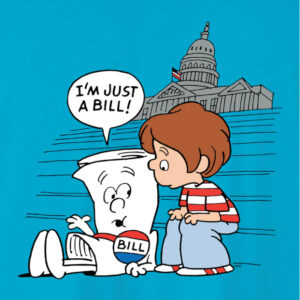Money Left on the Table?
By Carrie Thompson
There has been a lot of chatter surrounding President Biden’s Infrastructure and Jobs Act and as opposed to the Build Back Better agenda, this legislation was passed by the house on November 5, 2021, and signed into law on the 15th.

What does this mean for our country, states and local communities? It sure sounds like a lot of money is on the table. A successful outcome for any state is leaving NO money on the table and the elected officials have an opportunity and duty to get monies distributed into localities producing maximum benefits for all. There are and will be many hands across the state extended out for these funds and the key to receiving any grant or loan is to get the first ask right and delivered structurally on point.
As a stated goal the $1.2 trillion Infrastructure Bill is focused on getting resources into “underserved communities” and the individual states will have much discretion over project funding dispersals to the cities, towns and villages.
Federal policy follows a formula for assessing state need based first on population density and existing infrastructure.
Larger states like Texas, California and New York will receive a lion’s share of the available funds with loans or grants made to the states directly through federal agencies like the Department of Education, Department of Commerce, Department of the Interior and/or the Environmental Protection Agency. Once received at the state level, funding is then channeled through a variety of programs like “Drinking Water State Revolving Fund” or the “Highway Safety Improvement Program” filtering its way down to local coffers via the direct efforts of county and local officials. At the district level it is critical to demonstrate a fluid pipeline of controls via the community departments infrastructure to appeal, absorb and administer the funding effectively and appropriately.
Taking a minute to overview the 1.2 trillion eyeball-popping figure, it’s important to keep in mind that the top priority for these monies will go toward repairing and improving existing decaying and outdated state hard infrastructure, i.e. roads, bridges, railroads, power grids, ports, airports and public transportation. Additionally, the funding bill includes provisions for cybersecurity, toxic waste cleanup, water infrastructure, electric vehicle charging stations and replacing the fleet of public school buses in “low income, rural, and tribal communities.”
The breakdown towards the end is where is gets possibly significant for our county and village.
By federal mandate, state funding must benefit underserved communities. The key for Otsego County is to leverage strong, centralized grant writing so that all municipalities are best-served and share in savings, regardless of future funding levels. Why? A rising tide lifts all boats aphorism! Scaling the funding proposition multiplies the impact by illustrating need of overlapping infrastructures in all corners of the county and thereby strengthening other connecting initiatives like education and health care.
In addition, our Otsego Lake is the main source of the Susquehanna River, draining over 27,500 square miles, impacting entire ecosystems before arriving at the mouth of the Chesapeake Bay, thus positioning our county perfectly as a critical component in the national “water security” conversation.
In fact, major funding is allocated to all things water — its health and safety nationally recognized for critical importance and potential crisis if not managed effectively. There is funding for lead pipe replacement, stormwater management, culvert removal, replacement and restoration. Further into the rural community Federal outreach there is also allocated funding for invasive species elimination, wildlife vehicle collision research, and promoting women in trucking.
Lifted from page 9 of 17 the Bipartisan Infrastructure Law Rural Playbook on www.whitehouse.gov states “for competitive grant programs, potential recipients should begin to work with community stakeholders, local planning organizations, Federal agency field offices and others to develop a list of priority projects in their communities.”
Let’s get creative and get to work Otsego County!

